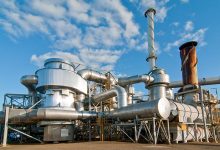Mining giant BHP has announced plans to build two new solar farms and a battery energy storage system to help power its Nickel West operations in Western Australia’s Goldfields region, and cut its dependence on diesel and gas.
BHP said the Northern Goldfields Solar Project, which it will build in partnership with TransAlta, would include a 27.4MW solar farm at its Mt Keith open pit nickel mine and 10.7MW of solar and a 10.1MW (MWh not specified) battery at the Leinster open pit and underground nickel mine.
The miner said the solar and battery projects, which remain subject to final approvals from the WA government, would be built, owned and operated by TransAlta as part of a power purchase agreement (PPA) extension signed in October 2020.
The project marks the first large-scale onsite solar farm and battery that BHP has commissioned at any of its global operations, the company said on Friday.
The plan for the solar and battery projects follows hot on the heels of a massive deal inked between BHP and Tesla that will see the EV and battery giant source Australian nickel from BHP’s Nickel West operations.
In an announcement last week, as reported on RenewEconomy’s EV-focused sister site The Driven, BHP said its Nickel West operations were among the “most sustainable and lowest carbon emission” producers of nickel around the world.
This week, BHP Nickel West asset president Eddy Haegel said sustainable low carbon nickel was essential for the miner’s battery and electric vehicle customers.
“The Northern Goldfields Solar Project will further improve our position as one of the lowest carbon nickel miners in the world,” Hagel said.
“It will reduce emissions from electricity use at Mt Keith and Leinster by 12 per cent, reduce fuel costs and improve the reliability of our electricity supply with the addition of the battery storage system.”
Company-wide, BHP has a medium-term target to reduce Scope 1 and 2 emissions from its operated assets by at least 30 per cent from 2020 levels by 2030.
Construction of the solar and battery projects will begin in in the first half of 2022 and is expected to take 12-14 months, and at its peak will employ over 100 people on site.










